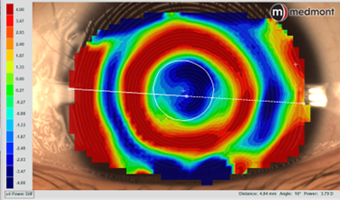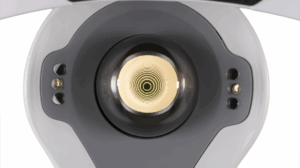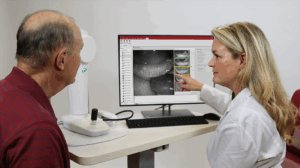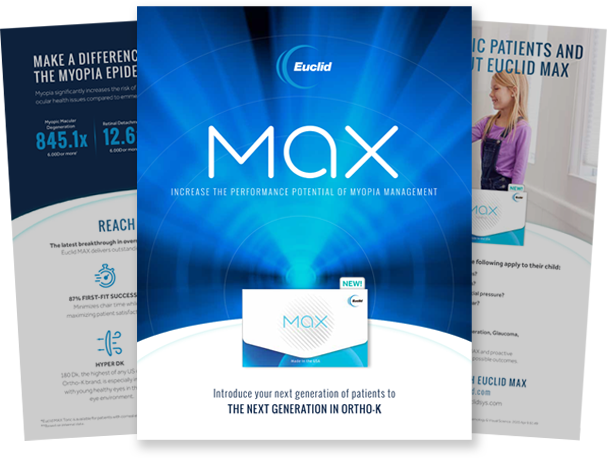A few years ago, a 13-year-old teenager presented for a myopia consultation. Her parents were concerned about her rapidly progressing myopia, long term eye health, as well as the need for thicker glasses impacting her active social life. After discussing the various myopia management options, the family decided to pursue orthokeratology due to all of its additional lifestyle benefits.
Her glasses prescription was measured at -3.75D in the right eye and -2.00-0.50×160 in the left eye. Baseline corneal topography maps were captured using the Medmont Meridia Pro, revealing moderate limbus-to-limbus corneal astigmatism (Figure 1). Though the patient had small, tight lid apertures, her doctor was able to capture as much real data as possible using this unique small-cone device.
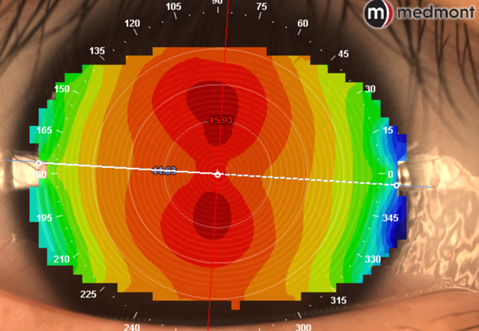
Figure 1. Baseline topography
The Medmont Meridia Maps
To confirm the peripheral corneal shape, elevation data was measured at an 8mm chord length to determine the sagittal height differential. At roughly 25-30 microns of peripheral corneal elevation difference between the primary meridians, Euclid MAX™ Toric lenses were designed for both eyes. These lenses were made with toric peripheries to closely match the limbus-to-limbus corneal astigmatism.
The Medmont Meridia maps were crucial in both demonstrating to the parents their daughter’s complex corneal shape, as well as in designing precisely fit lenses using her real data. Euclid designs and Medmont topography can typically yield an 87-95%* first-fit success rate. This case highlights the immense feature-set of the Meridia pro in helping the doctor troubleshoot an extremely complicated fit:
- Horizontal visible iris diameter (HVID) measurements precisely determined the proper overall lens diameter (Figure 2).
- Difference, or subtractive maps, revealed double-ring patterns suggestive of tight-fitting lenses (Figure 3).
- Anterior segment fluorescein imaging with built-in cobalt blue allowed the doctor to capture photos and videos of the lens fitting relationship to communicate efficiently with lens consultants (Figure 4).
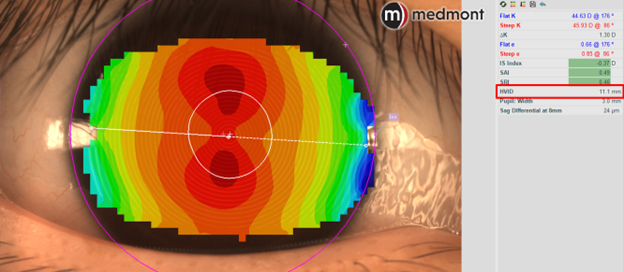
Figure 2. HVID measurements
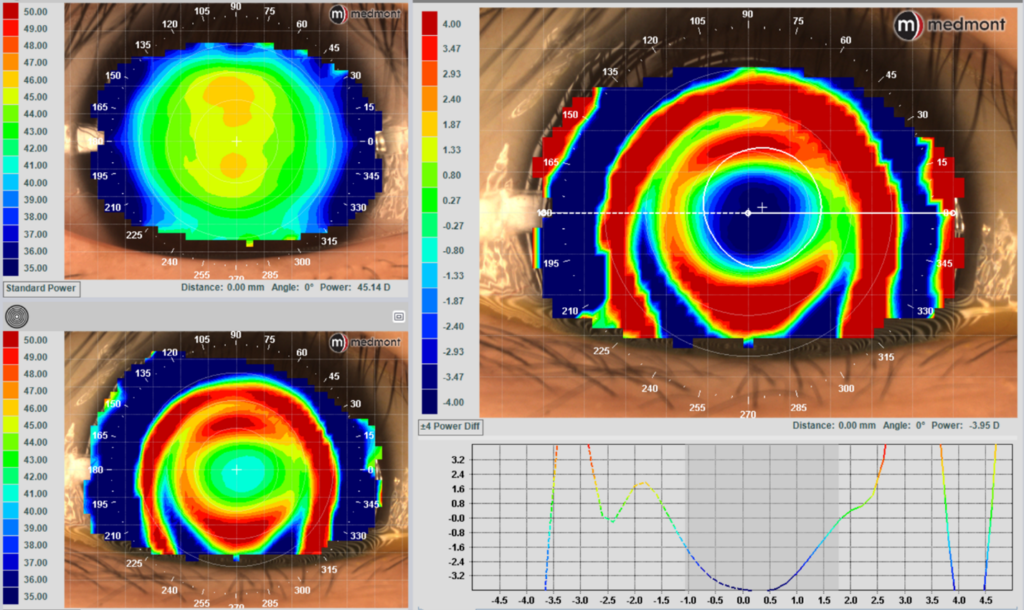
Figure 3. Difference, or subtractive maps, revealing double-ring patterns suggestive of tight-fitting lenses
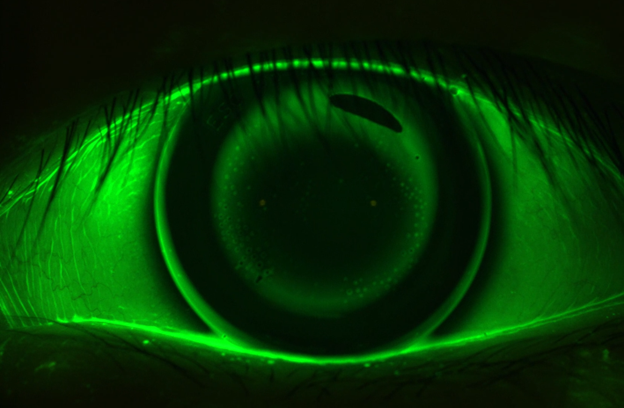
Figure 4. Anterior segment fluorescein imaging with built-in cobalt blue allowed the doctor to capture photos and videos of the lens fitting relationship
Final Result
The final result shows well-centered, bulls-eye ring patterns OU (Figures 5.6). The patient continues to excel with her Euclid MAX Toric lenses, maintaining great visual performance, excellent corneal health, and effective slowing of myopia and axial elongation. The parents couldn’t be happier.
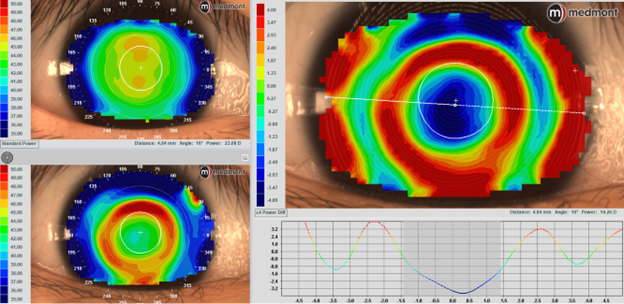
Figure 5. Right eye topography

Figure 6. Left eye topography
Written by Dr. Jackson Lau, FAAO, FSLS, on behalf of Dr. Michelle Kim.
*2019 Euclid Internal Data, Hong-Kong Studies: Tan 2019, Orthokeratology, Guo 2021, Orthokeratology


